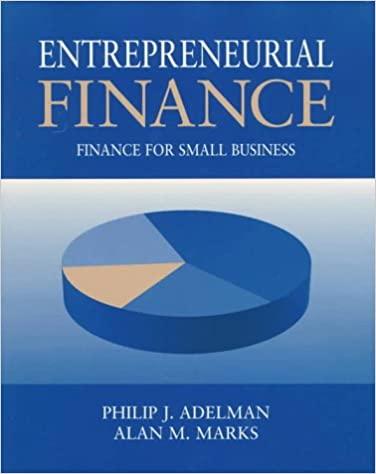Answered step by step
Verified Expert Solution
Question
1 Approved Answer
Problem 1 2 - 5 0 ( Algo ) Basic Capital Budgeting Techniques; Uneven Net Cash Inflows with Taxes; Spreadsheet Application [ LO 1 2
Problem Algo Basic Capital Budgeting Techniques; Uneven Net Cash Inflows with Taxes; Spreadsheet Application LO
Bob Jensen Incorporated purchased a $ machine to manufacture specialty taps for electrical equipment. Jensen expects to sell all it can manufacture in the next years. To encourage capital investments, the government has exempted taxes on profits from new investments. This legislation is to be in effect for the foreseeable future. The machine is expected to have a year useful life with no salvage value. Jensen uses straightline depreciation. Jensen uses a discount rate in evaluating capital investments, the investment is subject to taxes, and the projected pretax operating cash inflows are as follows:
Year Pretax Cash Inflow
$
Jensen has been paying for combined federal, state, and local income taxes, a rate that is not expected to change during the period of this investment. The firm uses straightline depreciation. Assume, for simplicity, that MACRS depreciation rules do not apply.
Required:
Using Excel, compute the following for the proposed investment:
The payback period, under the assumption that the cash inflows occur evenly throughout the year. Do not round intermediate calculations. Round your final answer to decimal place.
The accounting book rate of return based on a initial investment, and b average investment. Round your final answers to decimal place ie
The net present value NPVDo not round intermediate calculations. Round your final answer to nearest whole dollar amount.
The present value payback period of the proposed investment under the assumption that the cash inflows occur evenly throughout the year. Note: use the formula at the bottom of Appendix C Table to calculate present value factors.Do not round intermediate calculations. Round your final answer to decimal places.
The internal rate of return IRRDo not round intermediate calculations. Round your final answer to decimal place ie
The modified internal rate of return MIRRDo not round intermediate calculations. Round your final answer to decimal place ieIn conjunction with this question, you might want to consult either of the following two references: MIRR Function andor IRR in Excel.
Step by Step Solution
There are 3 Steps involved in it
Step: 1

Get Instant Access to Expert-Tailored Solutions
See step-by-step solutions with expert insights and AI powered tools for academic success
Step: 2

Step: 3

Ace Your Homework with AI
Get the answers you need in no time with our AI-driven, step-by-step assistance
Get Started


